How to master your first press up
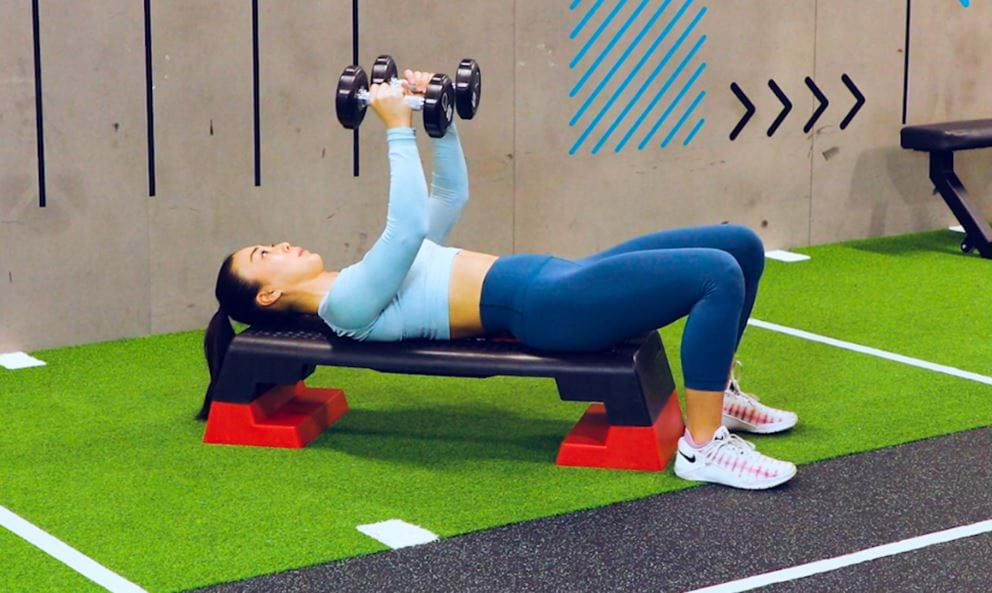
Are you working hard in the gym, but you still can’t seem to master your first full press up? Don’t worry – we’ve got you!
Press ups are a great compound upper body exercise that recruits a wide range of primary and stabilising muscles - conditioning your whole body! Not only does it work your chest muscles, but also recruits your shoulders, triceps, lower back and core too.
Full range press ups are tricky, so don’t be disheartened if you can’t do them yet. One thing we recommend is including press up variations in your workouts that help your body and muscles get familiar with the press up movement pattern – such as incline press ups, kneeling press ups and negative press ups. It’s also helpful to add exercises that strengthen your chest and tricep muscles which play a huge part in the concentric phase of the press up - the drive back up to the plank position.
Here are 5 exercises we recommend including in your weekly workout routine to help master your first press up:
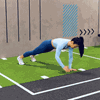
Exercise 1: Plank with Shoulder Taps
When you think of a press up, you more than likely think of your chest muscles… but did you know that press ups also use your shoulder muscles too? That’s why it’s helpful to include exercises in your routine that strengthen your shoulder muscles and improve shoulder stability too.
Planks with shoulder taps are an awesome exercise to work your abs and obliques whilst also challenging your shoulder strength and stability.
Becoming familiar with the plank position and building up your core strength to keep a stable base is a great way to progress towards a full press up. If you need to, start on your knees and then work up to a full plank when you’ve perfected your form.
The added shoulder taps will add a little extra spice to the exercise, challenging your shoulders to work harder at stabilising the plank.
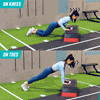
Exercise 2: Incline Press Ups
Incline press ups primarily work your chest muscles and core, taking some pressure off your arms and shoulders in comparison to the classic press up. This makes the exercise a great starting point to get familiar with the press up movement pattern.
An important tip is to make sure you keep your core tight, so your body stays in a straight line while in the plank position. Avoid arching your back to lower down towards the box or surface you’re using.
You can start off doing incline press ups on your knees if needed, and then gradually progress onto your toes to make it that little bit more challenging.
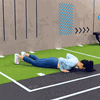
Exercise 3: Negative Press Ups
Negative Press ups focus on slowing down the eccentric portion of the movement – the lowering phase - while getting your muscles familiar with the full range press up movement pattern. This is a great stepping-stone exercise to build strength in the eccentric phase of the movement even if your muscles aren’t strong enough to perform the concentric phase yet – the drive back up to the plank position.
You may need to start this exercise on your knees but can then progress to your toes when you’re ready for an extra challenge.
To make this exercise even more effective to help master your full press up, we recommend also working on your power and drive in the concentric phase if you can. Don’t worry if this is too challenging at first – reset back into your plank position and just focus on the eccentric phase and add this back in at a later date.
If you want to give it a try, take the negative press up to the floor, take a slight pause to take the tension off your muscles and then explode out of the bottom of the exercise - the concentric phase. Make sure to keep your core tight and your spine neutral throughout.
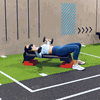
Exercise 4: Chest Fly
Another great way to master your first press up is working on growing and strengthening your chest muscles. One exercise you could try is the chest fly - an isolation exercise that helps to stimulate and strengthen your chest muscles, particularly the pectoralis major.
Keep the reps controlled and focus on the squeeze as you bring the dumbbells back to the centre. Make sure you’re only using a light weight here as using a weight too heavy can put excess strain on your shoulders and lead to injury.
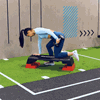
Exercise 5: Tricep Kickbacks
Your triceps play an important role in the classic full press up, helping the chest muscles by playing a primary role in the concentric phase of the press up. Therefore, strengthening your triceps muscles can be an effective way to master your first press up.
A great exercise to try to build strong triceps are tricep kickbacks. They are another isolation exercise which when done correctly can build strength and power from your tricep muscles but are great for beginners!
One top tip when doing kickbacks is to keep your elbow pinned close to your side to avoid momentum or movement of the shoulders to assist the tricep muscles. You can also take a slight pause before slowly hinging at the elbow and returning to the starting position – this will also help to reduce momentum and instead make your tricep muscles work harder.
We hope you give these exercises a try and work them into your weekly routine to help you master your first press up! For more workout tips and exercise routines check out the fitness category on the PureGym blog.


